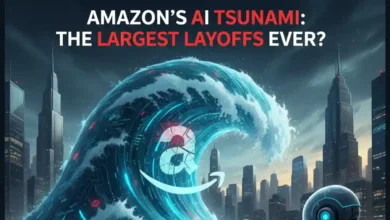How Tesla’s Robotaxi and Cybercab Will Revolutionize Transport

The year is 2030. You wake up, grab your coffee, and instead of fumbling for car keys, you simply tap an app. Within minutes, a sleek, silent vehicle pulls up – no driver, no fuss. This isn’t science fiction; it’s the near future envisioned by Tesla, a future powered by their audacious Robotaxi and Cybercab initiatives. More than just new car models, these are the lynchpins of a complete overhaul of global transportation, promising a paradigm shift akin to the advent of the automobile itself.
For years, Tesla has been synonymous with electric vehicles, pushing the boundaries of range, performance, and charging infrastructure. But beneath the polished surfaces and impressive acceleration lies a far grander ambition: full autonomy. Elon Musk has repeatedly stated that a Tesla is not just a car, but an investment that appreciates in value as its self-driving capabilities mature. The Robotaxi and Cybercab are the ultimate manifestations of this vision.
What Exactly Are We Talking About?
Let’s break down these revolutionary concepts:
- Tesla Robotaxi: Imagine your current Tesla, but without the need for you to drive it. This is the core concept of the Robotaxi. Existing and future Tesla vehicles, equipped with the company’s advanced FSD (Full Self-Driving) hardware and software, will be able to operate as fully autonomous taxis. Owners could, in theory, send their personal vehicle out to earn revenue while they’re at work or asleep, transforming a depreciating asset into a money-making machine. The implications for individual wealth creation and vehicle utilization are profound.
- Tesla Cybercab: This is where things get even more interesting. While the Robotaxi leverages existing vehicle architecture, the Cybercab is expected to be a purpose-built autonomous vehicle, designed from the ground up for ride-hailing and shared mobility. Think of a sleek, futuristic shuttle, optimized for passenger comfort, efficient ingress and egress, and maximized interior space, free from the constraints of traditional driver-centric design. While details are scarce, expect a design that prioritizes durability, low maintenance, and an unparalleled user experience, potentially drawing inspiration from the radical aesthetics of the Cybertruck.
The Pillars of Revolution: How They’ll Disrupt Everything
The impact of Robotaxi and Cybercab extends far beyond simply hailing a driverless car. They are set to fundamentally alter urban planning, personal finance, environmental sustainability, and even social dynamics.
- Unlocking True “Transportation as a Service” (TaaS): The dream of TaaS is about seamless, on-demand mobility without the burden of vehicle ownership. Robotaxis and Cybercabs will bring this dream to fruition.
- Cost Savings: For many, the cost of car ownership (purchase, insurance, maintenance, fuel/charging, parking) far outweighs the actual utility. A subscription-based or per-ride autonomous service could be significantly cheaper, especially in urban environments.
- Elimination of Parking Woes: Imagine a city where vast parking lots are repurposed into green spaces, housing, or commercial developments. Autonomous vehicles will drop passengers off and then either pick up another fare or autonomously reposition to a less congested area, drastically reducing the demand for urban parking.
- Reclaiming Time and Reducing Stress: The average commuter spends hundreds of hours a year driving. Robotaxis transform this dead time into productive or leisure time.
- Productivity on the Go: Passengers can work, read, attend virtual meetings, or simply relax while commuting, turning travel time into an extension of their day.
- Enhanced Safety: While human error is a factor in over 90% of accidents, autonomous systems, once fully mature, promise a drastic reduction in collisions, injuries, and fatalities.
- Environmental Transformation: The shift to an autonomous, electric fleet offers immense ecological benefits.
- Reduced Emissions: A fully electric Robotaxi/Cybercab fleet running on renewable energy sources would virtually eliminate tailpipe emissions in urban centers, drastically improving air quality.
- Optimized Routing: AI-powered routing will minimize mileage and congestion, leading to more efficient energy consumption and shorter travel times.
- Fewer Vehicles: With significantly higher utilization rates (a personal car sits idle 95% of the time), far fewer vehicles will be needed to serve the same population, reducing manufacturing impact and resource consumption.
- Urban Revitalization and Planning: Cities as we know them are largely shaped by the automobile. This will change.
- Redesigned Infrastructure: Roads can be optimized for autonomous flow, potentially leading to narrower lanes, more pedestrian zones, and cycle paths.
- Decentralization: Easier, cheaper, and faster transportation could allow people to live further from their workplaces without sacrificing commute quality, potentially revitalizing suburban and rural areas.
- Accessibility for All: Robotaxis offer unprecedented mobility for the elderly, disabled, and those unable to drive, fostering greater independence and social inclusion.
Challenges on the Road to Utopia
While the vision is compelling, the path isn’t without its hurdles:
- Regulatory Frameworks: Governments worldwide are grappling with how to regulate autonomous vehicles, especially concerning liability in accidents. A unified, clear regulatory environment is crucial.
- Public Trust and Acceptance: Overcoming skepticism and building trust in driverless technology will require flawless performance and transparent communication.
- Technological Perfection: While Tesla’s FSD is advanced, achieving true “Level 5” autonomy (fully driverless in all conditions) is an immense engineering challenge. Edge cases, unpredictable weather, and complex urban environments demand near-perfect reliability.
- Cybersecurity: Autonomous fleets will be highly connected, making them potential targets for cyberattacks. Robust security measures will be paramount.
- Job Displacement: The transition will undoubtedly impact professional drivers. Society must plan for retraining and new economic opportunities.
The Tesla Advantage: Why Them?
Tesla’s unique position in the automotive industry gives it a formidable advantage in the race for autonomous transport:
- Fleet Learning: With millions of vehicles on the road gathering billions of miles of real-world driving data, Tesla possesses an unparalleled data moat that continuously trains and refines its AI.
- Vertical Integration: From chip design (Dojo supercomputer) to software and vehicle manufacturing, Tesla controls nearly every aspect of its autonomous ecosystem, allowing for rapid iteration and optimization.
- Brand Recognition and Vision: Tesla has cultivated a powerful brand synonymous with innovation, sustainability, and a compelling future. This will be crucial in building public trust and attracting early adopters.
- Charging Infrastructure: The Supercharger network provides a crucial backbone for an electric Robotaxi fleet, ensuring efficient recharging and minimal downtime.
The Road Ahead: A Glimpse into Tomorrow
The advent of Tesla’s Robotaxi and Cybercab isn’t just about getting from A to B; it’s about fundamentally reshaping our relationship with transportation, our cities, and our time. While the full realization of this future will take time, the pieces are rapidly falling into place. The first commercial Robotaxi services, likely starting in geofenced areas, will be the initial tremors of an earthquake that will redefine mobility for generations to come.
Prepare for a future where traffic jams are a relic of the past, where urban spaces are reborn, and where your daily commute becomes a truly productive or relaxing experience. The revolution isn’t coming; it’s already on its way, one autonomous mile at a time.
For more Odinozz Tech articles, click here.
Follow Odinozz on social media. Click here.



